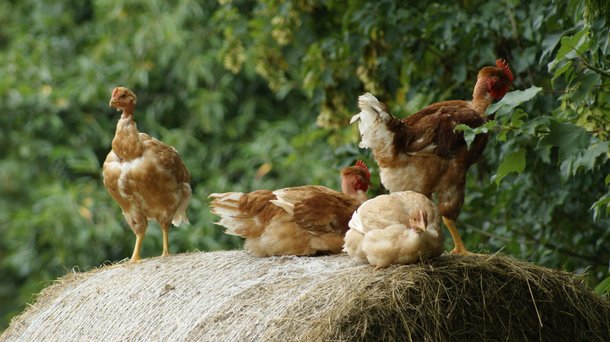The Label Rouge production chain
The Label Rouge was created in 1965 on the initiative of poultry breeders seeking to develop a breeding chain respecting tradition and providing a guarantee of quality to the consumer.
This warranty is the only official logo attesting a quality level higher than current products of the same type: "The Label Rouge certifies that food or non-food and unprocessed agricultural products have specific characteristics establishing a higher quality level, due primarily to their particular production conditions and workmanship and conforming to specifications, which set them apart from other similar food and products normally sold. " (art. L.641-1 the Rural Code).

The 5 principles of Label Rouge poultry are:
- Hardy breeds, selected for their slow growth and meat quality.
- Farmer style farming, outdoors or in freedom, in small groups, in large grassy and shaded areas.
- A diet consisting of 100% plants, based on cereals (70-75% minimum depending on species), supplemented by vegetable proteins (pea, soy ...).
- Much longer lasting breeding (about double that of standard poultry), which ensures firm and tasty flesh.
- Health safety with hygienic conditions systematically controlled at all stages of production.
Some key elements of the Label Rouge specifications
- Hen house size: 400 m2
- Maximum Density in the henhouse: 11 birds per m2
- Outdoor area: 2 square meters per chicken minimum to apply the term "outdoor", unlimited space for "free range" appellation
- Superior organoleptic poultry qualities: guaranteed by regular sensory analysis
How does the end consumer recognize Label Rouge poultry?
On each Label Rouge product, the sticker certifies the characteristics of the label. The label carries an individual identification number, a key element of traceability of Label Rouge poultry for the retrieval of the history of the animal, from birth to the store.

